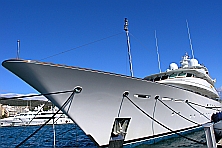How Wind Turbines Work
More people are becoming increasingly interested in the power that can be captured by wind turbines. These devices are developed to capture wind energy to assist the preservation of the environment. Wind turbines may be used by homes, businesses, and farms to help reduce the amount of electricity that is used on a daily basis. If you want to cut down on your electricity bill, consider the benefits associated with wind turbine technology to power your environment. These wind-powered devices are sure to erase your carbon footprint while leaving a positive influence on the surrounding environment. This article from Ploughcroft explains how wind turbines work.
Wind turbines work by capturing wind energy that is present in the environment. Of course, certain areas of the world have stronger wind and weather patterns than others. When the wind blows, the parts of the wind turbine are powered to generate electricity. The blades within wind turbines are powered by the wind and spin at high speeds to produce energy. This energy is then transmitted to a local export meter that measures how much electricity is being produced.
The faster the blades on the wind turbine spin the more electricity is generated. The electricity produced by wind turbines is distributed to the local electric company who can disperse it to local homes, businesses, and farms for immediate or long-term use depending on how much is generated. Additionally, if an excess amount of energy is generated by one or more wind turbines it can be stored for use later. The energy produced and transmitted by wind turbines immediately reduces the amount of energy produced by fossil fuels while also reducing carbon dioxide emissions.
The Effects of Wind Turbines
Wind turbines produce energy that consumes no fuel while emitting no air pollution like fossil fuels. Installing wind turbines can drastically reduce electricity expenses while conserving energy en masse. Wind turbines perform at their best in the midst of weather patterns that generate large amounts of wind, such as storms, hurricane, and other natural phenomenon. Generally, the parts of the country that receive the most amount of wind will benefit the most from these environmentally friendly devices. Green energy technologies also have the ability to use other sources of electricity when low amounts of wind are generated in any given area.
Wind turbine farms can generate large amounts of energy that can be fed into an export meter to store for later use. Since there are many different types of wind turbines, energy can accumulate in different parts of the environment to power homes, business, and farms. Wind turbines can be made to produce different amounts of power and may work synergistically with other nearby turbines on a farm. The type of wind turbine used to produce energy will depend on environmental factors as well as cost and proposed energy benefits. This type of energy conserving technology is responsible for cutting back on fossil fuel emissions that destroy the environment as well as damaging food and water supply that are used to support life.
Wind turbine technology has the potential to create a lasting impression in the environment. Market analysts indicate that the cost of installing wind turbines will be balanced out within a year due to the cost saving benefits associated with wind power. Additionally, the green energy that is produced by wind energy is estimated to be the most cost effective means of producing energy in the future. The major technology developments that produce electricity from wind turbines are due to be expanded in coming years. The future of green energy relies on the advancement of specific wind turbine technologies.














